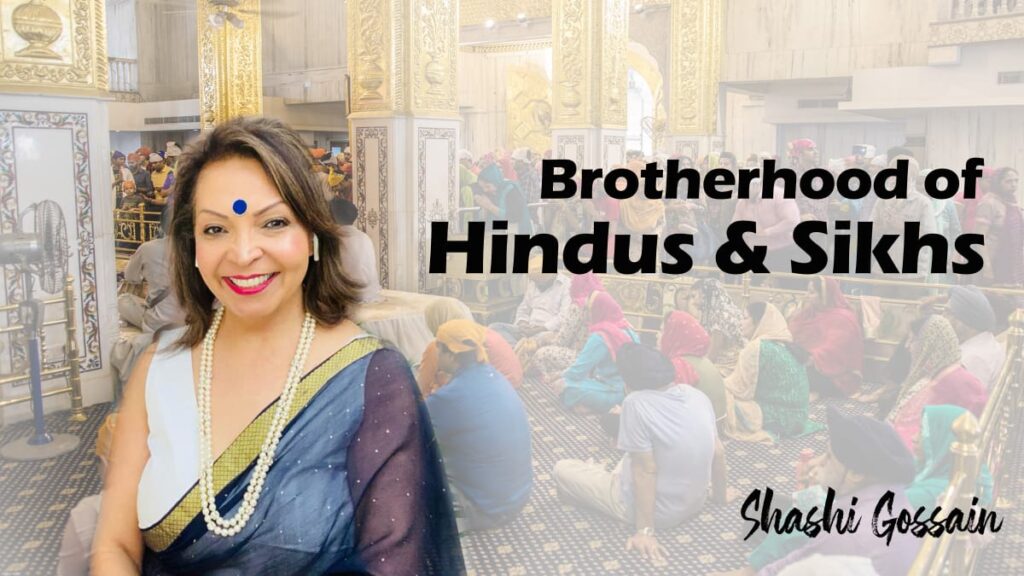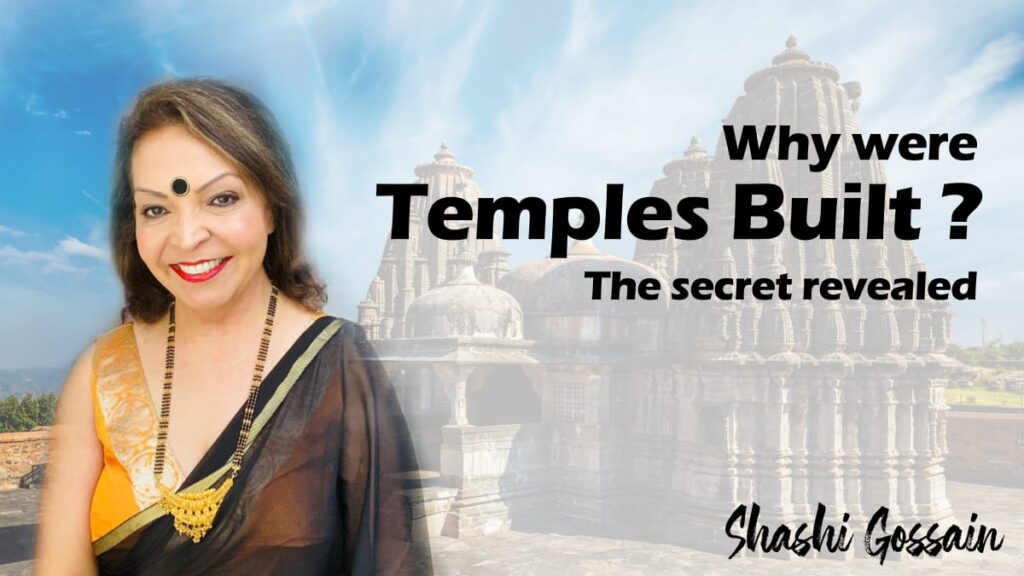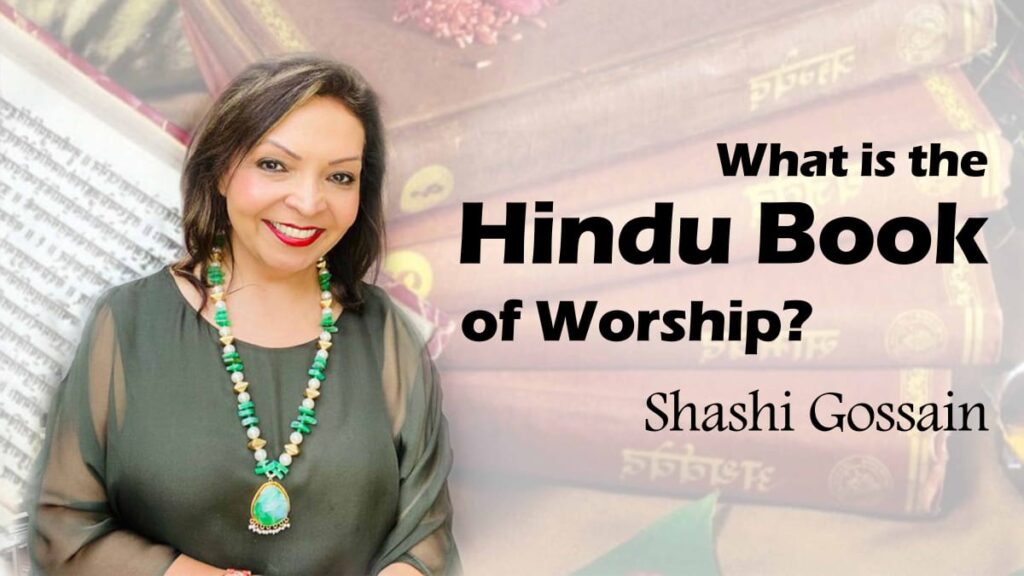Poet Kumar Vishwas says that Sikhs are elder sons of Hindu family who saved us from many threats. Sikhs are an inseparable part of the Hindu family, not another one.
Sikhism and Hinduism are the two main religions of Indian Origin. Hindu religion has a prehistoric origin and Sikhism was founded in the 15th century by the first Guru of Sikhs, Guru Nanak Dev.
Karma, Dharma, Mukti, Maya are some philosophical concepts that are shared by both cultures. The roots of Sikhism can be found in the Sant tradition of Indian culture.
The caste system was prominent during the medieval period also which was based on Manusmriti or Brahmins. But there was opposition to the same as well.
Many people did not agree with the ideas of Brahmins and turned to the teaching of the Buddha or the Jainas. And some other people felt attracted towards the concept of Supreme God. Intense love and devotion to God is the legacy of various kinds of Sufi and Bhakti moments that have evolved since the eighth century.
Namdev, Ramanand, Shankaracharya, Ramanuj, Vallabhacharya, Chaitanya, Kabir, Nimbakacharya, and Guru Nanak Dev are some leaders of the Bhakti movement.
Sikhism
Guru Nanak established a center named ‘Dera Baba Nanak’ on the bank of river Ravi at Kartarpur. The sacred places created by Guru Nanak were known as Dharamsala, also known as Gurudwara.
In the seventeenth century, the Sikh movement began to get politicized. Guru Govind Singh, the tenth Guru of Sikhs founded the Khalsa Panth in the year 1699.
Guru Nanak’s idea of quality had political and social implications. His idea of liberation was based on the pursuit of active life with a strong sense of social commitment, not that of inert bliss.
Guru Nanak preached against superstition, Casteism, idolatry, and ceremonies. He preached that devotion is the only way of salvation. He asked for unity amongst all religions. Unity and similarities between Hindus and Sikhs can always be seen.
‘Ik Onkar’ is a statement in Sikhism that is ‘there is one god’. Some people claim that ‘Onkar’ (Icon) in Sikhism is related to Om of Hinduism.
Political relations between Hindus and Sikhism
During the Mughal period, it is believed that Sikhs helped protect Hindus from Islamic persecution, and this cause martyrdom of Sikh Gurus.
While the influence of Guru Teg Bahadur, the ninth Guru of Sikhs, was rising in North India. Aurangzeb imposed Islamic law, demoralized Hindu schools, and temples, and enforced new taxes on non-Muslims.
According to Guru Govind, Guru Teg Bahadur had resisted prosecution and promised to protect Hindus.
During the Mughal Empire (1556 to 1707) several Sikhs were killed by Mughals for opposing the persecution of minority religious communities, including Sikhs.
Difference between Sikhism and Hinduism
1. Concept of God- In Hinduism oneness of god is a core belief, although it has some henotheistic and pantheistic tendencies. But the concept of God in Sikhism is monotheistic.
2. Worship- Sikhism does not allow Idol worship or there is no such concept. But Hinduism facilitates Idol worship.
3. Concept of Heaven and Hell- Hinduism says that the soul travels to heaven or hell after death. But according to Sikhism, Heaven and Hell both are present in this world.
4. Pilgrimage- Sikhism does not recognize pilgrimage as spiritual. But in Hinduism pilgrimages are considered as help for one’s spiritual development.
5. Caste system- Hindu society is divided into four varnas(costs). On the other hand, Guru Nanak preached against the caste system.
6. Animal sacrifice- Sikhism rejects the concept of Bali (sacrificing animals) to God. But in Hinduism there is concept of animal sacrifice.
Similarities between Sikhism and Hinduism
1. Moral principles- Moral principles of both Hindus and Sikhs are primary duties based.
2. Both the culture believes in Karma.
3. Concept of Guru exists in Hinduism as well as in Sikhism
4. Both Hindus and Sikhs are cremated after death.
There is a good harmony between Hindus and Sikhs. All Sikh’s ancestors were Hindus. Marriage between Hindus and Sikhs is frequent. Hindus and Sikhs celebrate all the festivals together.
Partition of India and Sikhs-
The British always wanted to divide India and Indians too. And one day their dream came true. Before the partition of India in 1947, Sikhs were the third largest community of United Punjab. The Sikhs had religious, historic, and socio-political roots in Punjab. The separation Nation’s demand for Muslim League in India was not only going to divide Punjab but also causing the division of the Sikh community.
Due to the partition of India religious migration of Punjabi Sikhs and Hindus took place from West Pakistan to the east (India).
Sikh Empire
The Sikh Empire, also known as Sikh Khalsa Raj, Khalsa Raj, or Sarkar-e- Khalsa, was a State formed under the leadership of Maharaja Ranjit Singh in Punjab.
In the first half of the 19th century, the Sikh Empire extends from the Khaibar pass in the West to Western Tibet in the east and from Mithankot in the south to Kashmir in the north.
Lahore was captured by Maharaja Ranjit Singh in 1799. This empire existed from 1799 to 1849.
Anglo Sikh wars
Two wars were fought between Sikhs and the British. This was resulted in the annexation and conquest by the British of the Sikh state Punjab.
The first Anglo-Sikh war was fought between the Sikh state of Punjab and the British during the year 1845-46. As a result, some parts of the Sikh state become part of the British raj.
The second Anglo-Sikh war was fought during 1848-49 between the state of Punjab and the East India Company of the British. As a result whole of the Sikh state become part of the British Raj.
Anti Sikh riots 1984
Anti-Sikh riots or anti-Sikh massacre was an organized pogrom against Sikhs across India by anti-Sikh mobs in response to the assassination of then Indian Prime Minister Indira Gandhi by her bodyguards who were Sikhs.
More than 3000 Sikhs were killed in the capital of India New Delhi and an estimated 8000 across India.
Due to the armed separatist Khalistan movement, the violence continued in Punjab in the 1980s. Khalistan separatists sought independence from India.
Khalistani militant leader Jarnail Singh Bhindranwale made the Golden Temple armoury and headquarters of militants.
To remove the separatist who was inside the Golden Temple at Amritsar, an Indian military operation was launched with the code name ‘Operation Blue Star’. This operation was ordered by then Prime Minister Indira Gandhi.
Operation Blue Star Was carried out between 1 June and 8 June 1984, was resulted in the death of Bhindranwale.
According to Amarjeet Kaur(a Member of Parliament), Bhindrawale wanted to start a civil war between Hindus and Sikhs.
After four months of operation, Indira was assassinated by her two bodyguards (Satwant Singh and Beant Singh).
Many Congress leaders were believed to be behind the anti-Sikh massacre.
India has faced several national security threats and challenges. While various communities across the country have contributed to overcoming these threads, the Sikh community’s contribution has been proportionally large relative to the small size of its population.
Inspired by the preaching of Guru Nanak Dev Sikhs were engaged in selfless service. A large number of Sikhs serve in the Indian Army. The Sikh soldiers fought gallantly on the battlefield in the First and Second World Wars also.



